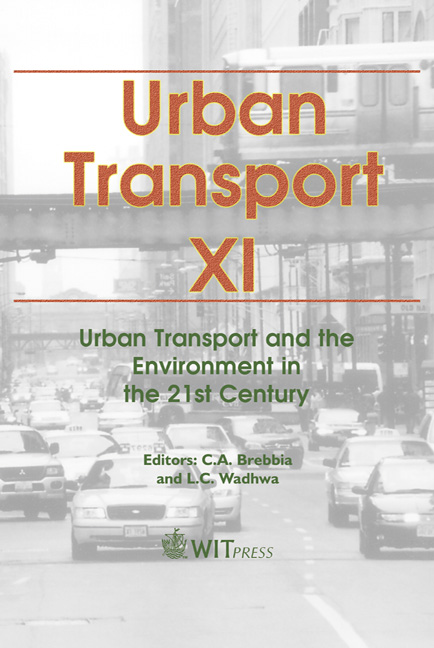The Potential Fuel Economy Due To Hybrid-drive Buses Use: The Case Of Brazilian Urban Transit Corridors
Price
Free (open access)
Transaction
Volume
77
Pages
8
Published
2005
Size
473 kb
Paper DOI
10.2495/UT050531
Copyright
WIT Press
Author(s)
M. A. D’Agosto & S. K. Ribeiro
Abstract
Studies carried out by COPPE/UFRJ have shown the diesel fuel potential reduction through the use of hybrid urban buses (D’Agosto & Ribeiro, 2003). Field research on the energy efficiency curve indicates that fuel economy is higher when the average speed is 15–25km/h, which happens in some transport corridors, such as São Paulo Metropolitan Area, where this kind of vehicle has been used since 2001. Based on such considerations, this paper presents data on the principal urban corridors which are considered to be potential users of hybrid drive technology. The match between the energy efficiency curve for hybrid buses and the corridor average speed enables the identification of the areas which show the best potential for this technology and where best gains are expected. Keywords: hybrid drive buses, fuel economy, green house gases emissions. 1 Introduction Public transport in Brazilian cities accounts for 29% of the total trips, in which 94% of them are carried out by bus. A fleet of 55 thousand buses, which run approximately 250 million kilometer per month is responsible for transporting more than 550 million passengers a month. Such a large fleet consumes more than 60 million liters of diesel oil, representing 16.5% of the total operational cost. One should notice that in the last 8 years the diesel cost has raised 61.5% [1], what makes the improvement of bus fuel economy a key issue to be addressed. Studies carried out by COPPE/UFRJ have shown the diesel fuel potential reduction through the use of hybrid urban buses [2]. Field research on energy
Keywords
hybrid drive buses, fuel economy, green house gases emissions.





